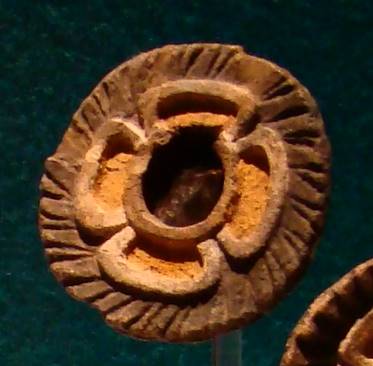Mirrors in Mesoamerican Culture
Over the centuries and millennia’s, Central America and the Mesoamerican Cultures that lived in that area developed specific traditions and religious ceremonies regarding mirrors. One of the most prevalent beliefs that were practiced by Maya, Aztecs and Tarascans is the thought that mirrors served as portals to realm that could be seen bot not interacted with. This ancient tradition evolved from their early beliefs that the smooth surface of water can be used as a potent tool for divination, seeing the unknown, portals to the sacred caves, conduits of the supernatural forces, and as synonyms for the power of the sun. These traditions remain preserved even today in the stone art that depicted religious figures gathering around pools of liquid, most likely water.
Mirrors created by Mesoamerican cultures were at first created from single piece of iron ore that was polished to the high degree of reflectiveness. Later on, metalworkers embraced many other ores and started created larger and more intricate mirrors. One of the most popular designs of the Classic Mesoamerica culture was mosaic pyrite mirrors that were in wide use in the famous city of Teotihuacan and all around Maya region. Modern archeologist only recently found out about the widespread use of mirrors in that region because the element of pyrite degraded over time and lost its reflectiveness. Now, everybody knows that many discovered Mayan pyrite items were in fact highly reflective mirrors. After the popularity of pyrite mirrors faded, Mesoamerican cultures adopted use of obsidian mirrors.
Mesoamerican mirrors were often connected with elements, body parts or astronomical objects. Here are the most famous ones:
Water – Association of mirrors with water came from the ancient beliefs that reflective water can show us future, divine someone’s fate and more. Before metal mirrors were made, diviners from all across Maya and Aztec territories used bowls of water as their main means to contact the supernatural.
Fire – Symbols of fire could be found in many mirrors across Mesoamerica. The most common representation of fire was in the form of flowers, petals and butterflies around the highly polished surface. Fire was celebrated from Classic to Postclassical periods for many reasons, but most notably because of the mirror’s ability to channel sunlight and create fire (fire making mirrors originated from Olmecs).
Jade – Mirrors that used jade as part of their design were popular in the Teotihuacan and the Mayan territories. Usually, mirrors were decorated with the jade beads and were used in burial ceremonies and offerings in Classic and Postclassical periods of Mesoamerican culture before arrival of Europeans. Jade beads were associated
Eyes and faces – Some mirrors made in the Classic period Teotihuacan and Guatemala's Pacific coastal region often featured depiction of gods with mirrors in their eyes.
Spiders – Network of spider webs became common theme in the design of mirrors during Classic period of Mesoamerican cultures.
Sun – One of the oldest and most popular themes in mirror ceremonies and beliefs in Mesoamerican culture was the sun. They even called sun as “Mirror sun”.
